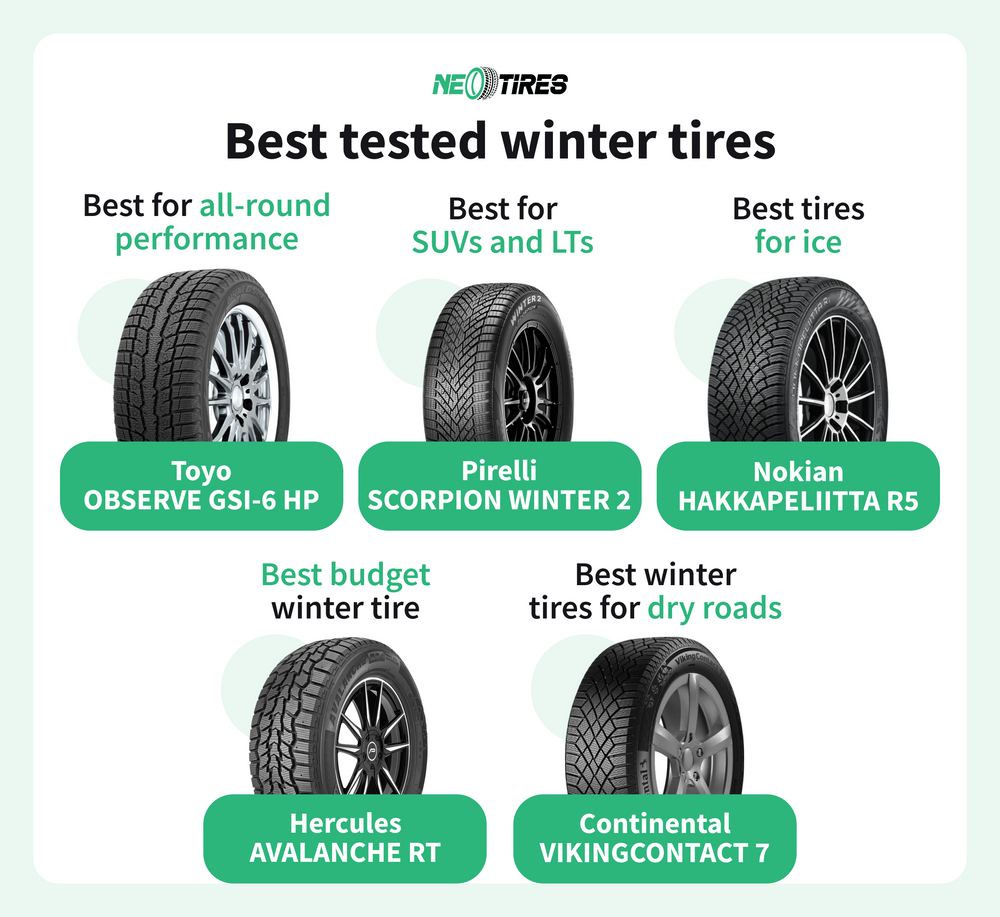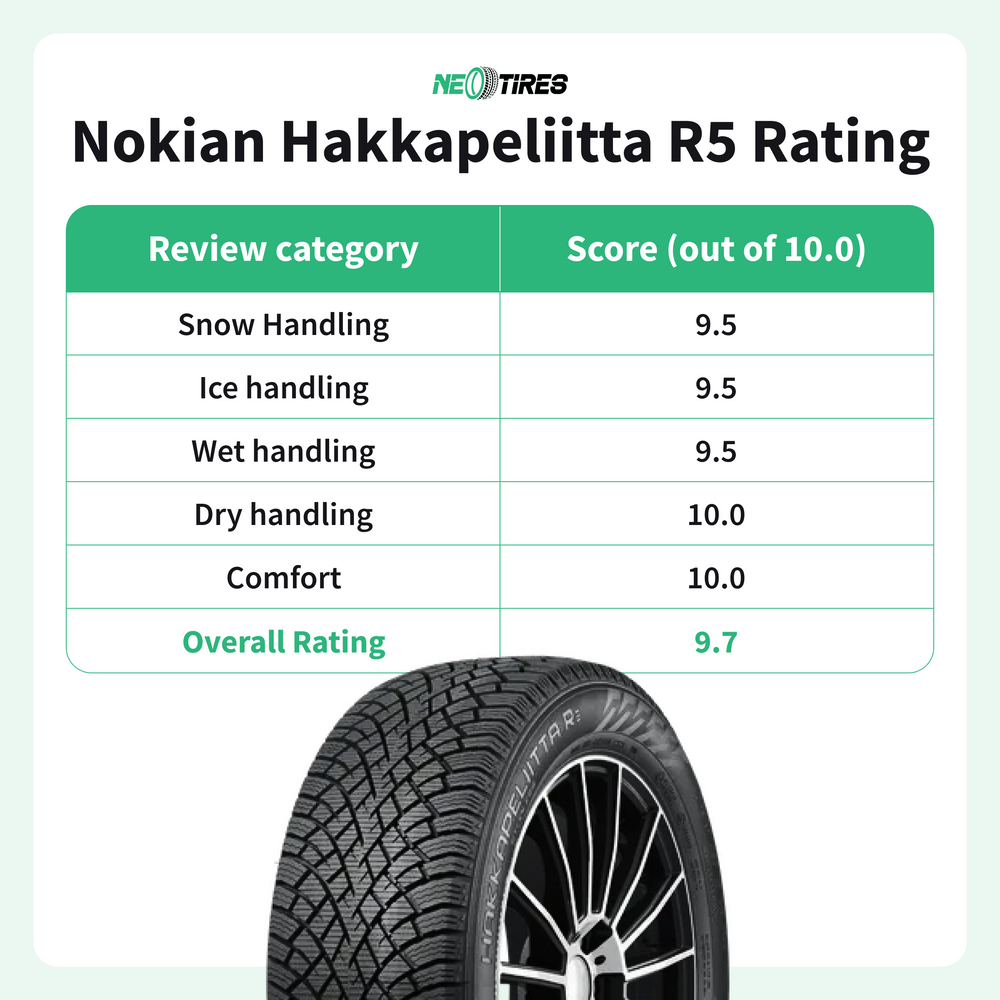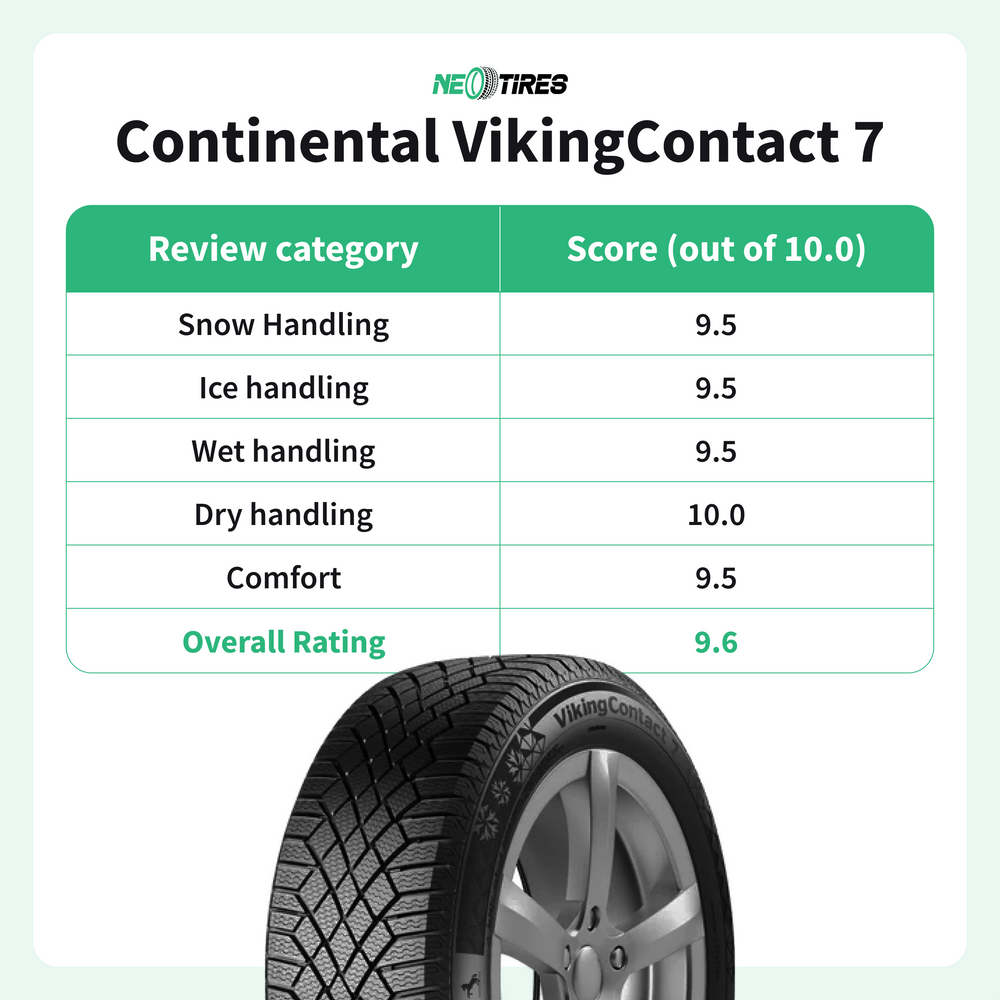Winter roads can make driving difficult due to unpredictable weather conditions with ice, snow, and freezing temperatures. The right winter tires define the capabilities of your vehicle, directly influencing its handling, traction, and braking. This section highlights the best winter tires, which, after internal testing, have provided the best performance in snow driving.
Best Winter Tires
The best-performing winter tires according to our tests are: Pirelli Scorpion Winter 2, Toyo Observe GSi-6 HP, Hercules Avalanche RT, Nokian Hakkapeliitta R5, and Continental VikingContact 7.
These products were subjected to ice handling, snow traction, comfort, and wet/dry handling tests and achieved maximum scores compared to other winter models.
Pirelli Scorpion Winter 2: Best Winter Tire for SUVs and Light Trucks
✅ Key Features:
- Staggered V-shape design with a continuous edge from shoulder to shoulder for better snow performance.
- Optimized variable grooves section for improved wet performance.
- Main groove chamfers with added flow for water evacuation.
- 3D sipes and straight design for high braking performance on snow, wet, and dry surfaces, along with excellent mileage.
- Snow edges on the main grooves act as traps for snow retention.
Why Choose Pirelli Scorpion Winter 2
Scorpion Winter 2 is designed specifically for SUVs and crossovers, including light trucks and pick-ups. The tire provides the stability, traction, and braking control that these heavier vehicles need during winter. Its V-shaped tread pattern, snow-edge blocks, and 3D sipes help the tire pack and grip snow effectively. This design keeps it stable and predictable on fresh, packed, or slushy snow. Independent tests show it also performs very well in wet conditions by offering short braking distances and strong resistance to aquaplaning. This feature is important in areas where winter often brings rain and melting snow instead of just deep powder.
Another reason to choose Scorpion Winter 2 is its balanced everyday usability. Drivers get the winter grip they need without the noise and stiffness of aggressive Nordic-style tires. The tire feels composed on dry winter pavement, stays comfortable for commuting, and handles well at highway speeds. For SUV owners seeking reliable winter safety across snow, slush, wet roads, and cold asphalt, rather than just extreme conditions, Scorpion Winter 2 is one of the most well-rounded choices available.
Nokian Hakkapeliitta R5: Best Tire For Ice
✅ Key Features:
- Double Block Grip design offers superior grip and handling
- Best-in-class ice performance due to Arctic Grip Crystals
- Superior quietness with Silent Touch tread design
- Green Trace compound for winter grip and low rolling resistance
Why Choose Hakkapeliitta R5
The Hakkapeliitta R5 is a tire that combines a series of technologies to deliver superior winter grip, eco-friendliness, and quietness. The product performs confidently on icy surfaces thanks to Arctic Grip crystals that work like built-in studs. The Hakkapeliitta R5 is a great option, including for hybrids and EVs. It performs predictably on all winter variations, including bare, icy, snowy, or wet roads.
✅ NeoTires note: Nokian Hakkapeliitta is included in our Tire Deals program. Check it out to take advantage of time-limited discounts and free shipping on all Nokian tires.
Continental VikingContact 7: Best Winter Tires For Dry Roads
✅ Key Features:
- Nordic Compound for superior snow and ice grip
- Pattern design with strong drainage capabilities
- 3D Trapez Sipes for agile braking
- EV, combustion, and hybrid engines- compatible
Why Choose Continental VikingContact 7
The VikingContact 7 is a winter tire with superior braking and snow traction capabilities. The product features a powerful tread design that removes slush and snow through drainage technologies while providing steering precision simultaneously. VikingContact 7 delivers stability and full control in challenging winter conditions through effective snow edges and thick sipes, ensuring confident winter driving.
Toyo Observe GSi-6 HP: Best for Reliability and All‑Round Winter Performance
✅ Key Features:
- High-Grip Silica Tread Compound: for better traction on snow and ice compared to GSi‑5. It also improves wet grip and braking performance in low temperatures.
- Microbit Technology: increases traction as ground walnut shells dig into the snow and ice.
- Aggressive Tread Design enhances traction and braking with large paired inner tread blocks. It also improves snow traction with serrated stability ribs.
- Absorbent Carbonic Powder provides better contact and grip on icy roads. This powder, made from bamboo, helps remove the thin layer of moisture on winter roads.
- Advanced Sipe Technology and Directional Tread Pattern.
Why Choose Toyo Observe GSi-6 HP
The GSi-6 HP is a dependable mid-range winter tire ideal for regions with moderate to severe snow and temperatures that fluctuate above and below freezing. It offers secure traction in fresh and packed snow, remains predictable on icy patches, and avoids the noise and stiffness of aggressive Nordic snow tires.
Independent tests show reliable wet performance and predictable handling. It handles well on dry, cold asphalt as well as snowy surfaces. It is a versatile choice for drivers who need dependable winter performance every day, whether commuting, running errands, or taking longer winter trips.
Hercules Avalanche RT: Best Budget Winter Tire
✅ Key Features:
- Exclusive Snow Grip Technology for strong cold-weather abilities.
- A triple polymer cold-weather compound for improved traction, steering, and handling in tough winter conditions.
- Thin-gauge sipes add flexibility for extra biting edges for better control.
- Saw-tooth shaped Snow-Grabber Grooves to capture snow in the tread to deliver snow-on-snow traction.
- Studdable design for added ice traction (where studs allowed)
Why Choose Hercules Avalanche RT
Hercules Avalanche RT is a practical winter tire that offers good traction on snow and ice at a reasonable price. Its directional tread pattern, dense sipes, and saw-tooth "Snow-Grabber" grooves help the tire grip snow and slush effectively. The rubber compound stays flexible in cold weather. The tread design also removes water and slush well, which lowers the risk of hydroplaning and helps maintain control on mixed winter roads. This makes it a dependable choice for passenger cars and crossovers in areas with snow, slush, or icy patches.
Avalanche RT also provides real-world value. It meets the 3-Peak Mountain Snowflake (3PMSF) standard. It comes in a variety of sizes and costs significantly less than many premium winter tires. For drivers who prioritize winter safety, braking control, and snow performance on a budget, Avalanche RT delivers solid performance without the high price.
Which Winter Tires Are the Best?
| Model/Rating | Overall | Snow Handling | Ice Handling | Wet Handling | Dry Handling | Comfort |
| Pirelli Scorpion Winter 2 | 9.8 | 9.5 | 10.0 | 10.0 | 10.0 | 9.5 |
| Nokian Hakkapeliitta R5 | 9.7 | 9.5 | 9.5 | 9.5 | 10.0 | 10.0 |
| Continental VikingContact 7 | 9.6 | 9.5 | 9.5 | 9.5 | 10.0 | 9.5 |
| Toyo Observe GSi-6 HP | 8.4 | 8.5. | 8.0 | 9.0 | 8.5 | 8.0 |
| Hercules Avalanche RT | 8.0 | 8.0 | 8.5 | 7.5 | 8.5 | 7.5 |
Ready To Find Your Winter Tire?
Winter tires are the key element ensuring maximum control on icy and snowy roads. Explore our Deals Page, including winter tires, whether you are looking for top-tier traction, durability, or the best value for your budget. Contact us if you get stuck in the multitude of available options. Our expert assistants will guide you to find the best-matching winter tire. Drive safe and choose your tires wisely!








